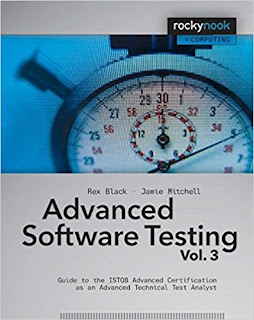How to crack ISTQB Certification Exam in first attempt!
ISTQB Certification exam..... Why do you want to get certified ? have you ever thought about this! If one answers this as "Just for sake of having certificate!" then I would say this is not the blog to read!!! If you are interested to learn more about Test Design Techniques, How to apply them when you are designing test cases, to have confidence that you are Certified Test Professional with strong hold on testing concepts and finally to stand out among your colleagues then you are at the right place. In this blog I would be giving information about: ISTQB Exams How to prepare for exams and crack exam in first attempt Sample questions with step by step approach to solve the questions Dumps Final Exam Preparation and Tips Ok, Lets get started then :) ISTQB provides certification exams at different levels, if you want to get idea about this right place to look is " official w ebsite " So, you are right. irrespective of your experience you need to ...
